
Goodbye, Meaningful Use. CMS renames program “Promoting Interoperability”
MedCity News ~ Erin Dietsche ~ 24/04/2018
On April 24, the Centers for Medicare and Medicaid Services announced plans to overhaul the Meaningful Use program by turning to a focus on interoperability.

There is a certain type of news reporting common in Australia that we like to call pavlova journalism, in which basic ingredients are beaten up so hard they turn into a meringue, crisp on the outside but slightly unctuous in the middle and certain to make you feel sick if you eat too much of it.
That's pretty much the feeling MedicalDirector staff would have had if they made the mistake of reading some News Corp publications on Monday. Nestled in a swirl of eggy slop was the bold claim that 45 per cent of Australian GPs were now required to share all of their patients' data due to a software upgrade.

Human error at a pharmacy has been identified as the cause behind incorrect PBS data being uploaded to the My Health Record.
The data has now removed from the record and corrected in the Department of Human Services' (DHS) systems, but to find out which pharmacy was involved, a freedom of information request will need to be lodged, DHS says.
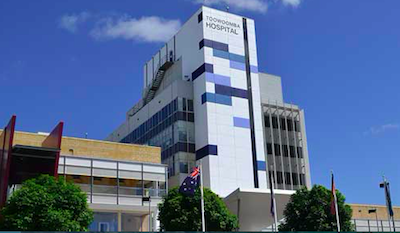
Queensland's Darling Downs Hospital and Health Service (DDHHS) has gone to market for an in-room patient and clinical information system for Toowoomba Hospital that will provide access to a huge range of systems, including the Cerner integrated electronic medical record (ieMR) that is being rolled out over the next year.
The tender calls for a software and hardware platform enabling the seamless delivery of customised content relevant to the recipient at the point of care, and will also be required at the $62 million, 66-bed hospital being built at Kingaroy.

In March 2010, in the 16th issue of Pulse+IT – back in the day a paper magazine – I wrote an article on how medical imaging technology at the time was not providing the heterogeneous user groups what they wanted in a universal viewer.
External GPs and clinicians wanted patient 'in context' clinical system viewer integration, along with the report. Specialists were looking for greater tools including 3D, and users wanted secure tablet access. Nobody wanted software on their device or desktop.
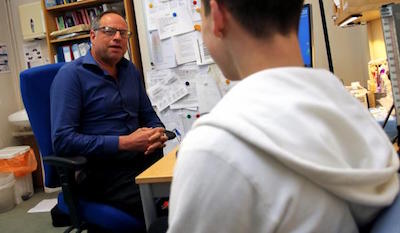
Clinical and practice management software vendor MedicalDirector has rejected a claim in a News Corp newspaper that it now requires users to share their patients' health data with the company as part of a software upgrade.
It has also denied there is a technical issue with its most recent upgrade that led one GP to believe all clinical and practice staff were automatically enrolled by default in its new MD Heart research tool.
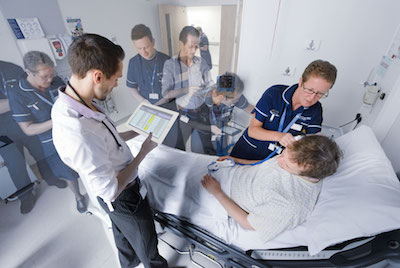
ASX-listed health informatics platform vendor Alcidion is set to buy IT services and integration specialist MKM Health, distributor of the Patientrack early warning system technology, for $12 million.
MKM Health CEO Kate Quirke will take over as CEO of the enlarged Alcidion, with current CEO and chairman Ray Blight to become executive chairman.
Alcidion, which markets the Miya health informatics platform, also recently bought New Zealand-based Oncall and its Smartpage clinical messaging system, and is set to now have a presence in the Australian, New Zealand and UK markets.

Southern District Health Board and WellSouth primary health organisation are inviting general practices to adopt the Health Care Home model of care, which provides patients with options such as phone consults and better access to their health records through secure patient portals.
Southern DHB and WellSouth launched a joint primary and community care strategy in January to help improve access and and better co-ordinate healthcare services across the district.
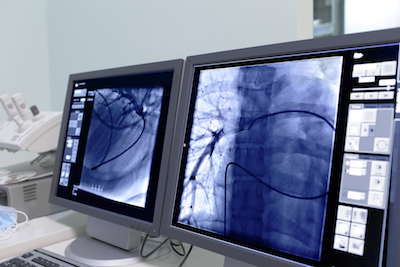
Perth Radiology Clinic (PRC) has become the first private diagnostic imaging group to connect to the My Health Record, the organisation having begun sending DI reports to the system in early April.
PRC has a number of community branches throughout metropolitan Perth and also operates in the new St John of God Midland Public and Private hospitals as well as Joondalup Health Campus and Armadale Health Service.

Nuance Communications has launched edition four of its Dragon speech recognition system for general and specialist medical practices, promising to relieve the burden of clinical documentation by up to an hour a day.
Dragon Medical Practice Edition 4 has been designed to work with commonly used clinical and practice management software and allows users to dictate straight into the patient record by placing their cursor in the required field and speaking. Dragon converts the voice to text and places it where the cursor is situated.
Edition 4 is available to Australian practices now and it will be released in New Zealand in the next four weeks, a Nuance spokesperson said.

Pulse+IT's weekly round-up of international health IT and eHealth news for the week ending April 22: VA loses secretary and CIO, throwing doubt on $10b Cerner deal; NHS sharing patient data with Home Office; FDA acts on medical device security; telehealth for women in South Africa; rumours Nokia will sell Withings; Apple's big reach
VA chief information officer Scott Blackburn resigns
Healthcare Informatics ~ Rajiv Leventhal ~ 19/04/2018
The VA will replace Blackburn with Camilo Sandoval, a former Trump campaign director of data operations.
Why the VA should reconsider decision to replace VistA
Health Data Management ~ Irv Lichtenwald ~ 17/04/2018
Shulkin’s dismissal left unsigned the contract with Cerner to replace the VA’s venerable VistA healthcare IT platform.

Practice management software vendor MediRecords was in the news this week when we revealed on Wednesday that it had picked up the contract to replace the now unsupported practiX for Queensland Health in a deal worth about $1 million over five years.
MediRecords managed to secure the contract in front of 13 other bidders in what was a hotly contested exercise, and while $1m is not a huge amount in the scheme of things, it will be warmly welcomed by MediRecords, which hasn't had as big an impact on the market that it originally hoped for when it launched in mid-2016.
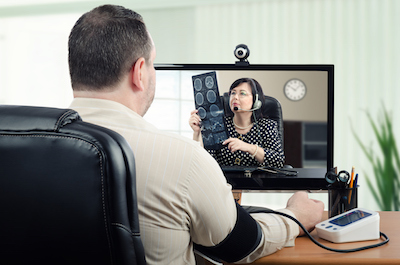
Auckland-based telehealth provider Doctor2Go has won a Callaghan Innovation project grant to help it integrate blood pressure monitoring into its telemedicine service.
The company has been trialling blood pressure monitoring as part of the service it provides to health insurer NIB's corporate wellness program.
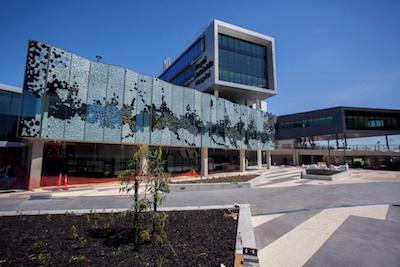
Christopher McGowan, the CEO of Perth-based aged and palliative care provider Silver Chain, has been appointed as the new chief executive of SA Health, replacing Vickie Kaminski, who is returning to Canada.
Dr McGowan has experience in the SA health system, having worked previously with Southern Adelaide Health Service and as CEO of Noarlunga Health Services.

The interim IT system that was used during the pilot of the national bowel screening program at Waitemata District Health Board along with human error caused up to 15,000 eligible people to miss out on an invitation for screening, the Ministry of Health has revealed.
It was initially thought that 2500 missed out because their addresses in the National Health Index (NHI) were not up to date.

Orion Health has released an upgrade to its Enterprise solution for hospitals, which provides an end-to-end clinical and patient management system including an electronic medical record, patient administration, surgical management, pharmacy and back office systems.
New features include support for patient check-in kiosks for better outpatient management, enhancements to the PAS and back office systems to include financial indicators, and efficiencies in the financial operations modules.

Former NICTA spinout Coviu has raised $1 million from the CSIRO's innovation fund to help expand its WebRTC-based telehealth platform to more allied health and medical practitioners.
The technology can be integrated into practice management software and comes with tools that are customisable for different health disciplines.

Cloud-based clinical and practice management system vendor MediRecords has picked up the hotly contested contract to provide a replacement for DXC's practiX PMS for medical officers employed by Queensland Health who also practice privately.
The five-year contract will see MediRecords pilot the system in one hospital and health service in the middle of this year before rolling it out to 14 other HHSs. DXC is no longer supporting practiX, which it inherited a number of years ago when it bought iSOFT.

The My Aged Care information website has had a redesign, boasting a new homepage, simpler navigation for consumers and a prominent log-in to the myGov site, where consumers can view their My Aged Care client record.
While predominantly for consumers, the redesign includes an updated section for service providers to make it easier to find functions specific to these users, including making a referral, logging into the provider portal and listing services in the service finder.

The still unexplained issues that affected the Medicare Easyclaim, Medicare Online and Eclipse services have been resolved and the systems are now operating as normal, the Department of Human Services says.
DHS warned practices on Monday that the systems were experiencing a degradation of service.

EMR vendor Allscripts has appointed Todd Haebich as general manager for Australia and New Zealand, having held the position of vice president for strategic accounts for ANZ for the last three years.
Mr Haebich will continue to work out of the company's Melbourne office, where he reports to Allscripts' managing director for Asia Pacific, David Chambers.

Queensland's West Moreton Hospital and Health Service has seen a reduction of almost 30 per cent in potentially preventable hospitalisations at Ipswich Hospital of chronically ill patients since the introduction of its MeCare remote monitoring program in late 2016.
The HHS has partnered with Philips to introduce the program to about 130 patients at risk of hospitalisation so far, using Philips' eCareCompanion telemonitoring platform and tailored management plans in a program dubbed MeCare.

The role of health information managers doesn't get a mention in the Australian Digital Health Agency's framework for action for the roll-out of the national digital health strategy, the profession's peak body says, with the development of the health information workforce forgotten yet again.
The Health Information Management Association of Australia (HIMAA) has long highlighted looming workforce shortages for health information managers (HIMs) and clinical coders and the deleterious effect this will have on digital health initiatives.

A scan of the clinical software market should be undertaken to avoid duplicating existing solutions as the national digital health strategy is rolled out, the leading industry association says.
In a submission to the Australian Digital Health Agency's consultation on its four-year framework for action, the Medical Software Industry Association (MSIA) has outlined six priorities it believes are essential, including conducting a market scan to ensure the agency is not reinventing the wheel.

The federal, state and territory health ministers have agreed to move to a federated model for the real-time monitoring of prescription drugs, allowing different systems to be used as long as they connect to or interface with Commonwealth ones.
The agreement, struck at the COAG Health Council meeting on Friday, appears to be a breakthrough in the drawn-out quest for a national RTPM system, which first began in 2012 when the then government bought a licence for the Electronic Recording and Reporting of Controlled Drugs (ERRCD) system from Tasmania.



We were all set to have one of our regular bouts of whingeing about the My Health Record this morning when what should pop into our inbox but an embargoed press release from the impressively titled $200 million+ Digital Health CRC.
Apparently this organ is set to transform healthcare delivery, improve the health of hundreds of thousands and save the health system $1.8 billion. It will also develop new solutions and take them to the world through the efforts of a crowd called HMS, which appears to be involved in flogging products to reduce costs for health insurers in the US.

The federal government has allocated $55 million over seven years to a new cooperative research centre for digital health, promising to develop and test digital health solutions in real hospitals and health services.
The CRC has named five medical software firms – Telstra Health, Fred IT, Alcidion, Pen CS and the Pharmacy Guild's Guild Link – as initial partners.
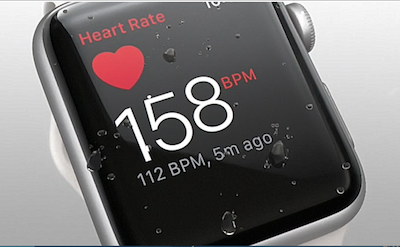
Australians surveyed and interviewed about their views and use of digital health technologies have indicated they overwhelming like to use Google to find out health information, but they are not particularly fussed about the security or privacy of their health data and they have a “profound” lack of interest in the My Health Record.
University of Canberra sociologist Deborah Lupton told the Australian Telehealth Conference (ACT 2018) in Sydney today about five research projects she has been involved in talking to a range of people and backgrounds.

The newly elected Liberal government in South Australia will shortly issue a tender for an independent body to review the state's electronic patient administration system (EPAS), which the party has fiercely criticised since it began its roll-out in 2013.
SA Health Minister Stephen Wade called a halt to the implementation of the system's clinical modules at the new Royal Adelaide Hospital last week, although the administrative modules have been operational since the hospital opened.
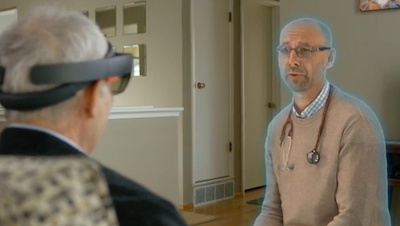
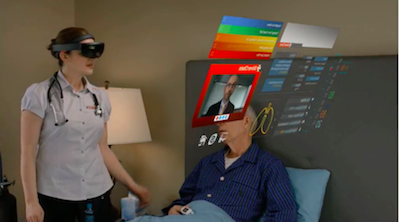
In-home health and aged care provider Silver Chain is trialling a prototype of Microsoft's HoloLens mixed reality headset to provide healthcare in the home for clients in remote regions of WA.
The HoloLens is a holoportation device that allows Silver Chain nurses to provide care to patients at home, see their care plan and document their care at the same time. The device is also being worn by patients, who can have a virtual face to face with their holographic doctor.


Fingerprint security for Android and Apple and facial recognition for iOS have been added to the Healthi app, which provides seamless access to the My Health Record on mobile devices.
First launched in February last year, Healthi accesses the My Health Record through the user's MyGov account. Once set up, it means users just have to enter a PIN or use the new Face ID or Touch ID capability to go straight to their My Health Record on their phone or tablet.

The My Health Record will hold useful clinical content and have comprehensive coverage of the patient population by the end of this year, fulfilling two of the key requirements for clinicians to begin using the system in earnest, Australian Digital Health Agency Tim Kelsey says.
Mr Kelsey told the Australian Telehealth Conference (ATC 2018) in Sydney this morning that by the end of the year, about 85 per cent of private pathology reports, 75-80 per cent of dispensed medicines information and a significant volume of radiology reports will be uploading to the system by the end of 2018, roughly coinciding with the time that the opt-out system is fully in place.

Melbourne's Austin Health has issued a request for information about the patient entertainment market as part of its planning for a patient engagement solution for its 900 beds.
It currently has about 600 LCD TV units for patients and in waiting areas, but is interested in finding a solution that can expand the entertainment and information services available as well as allow access to enterprise clinical systems for clinicians at the bedside.

WA Health is planning to begin uploading publicly ordered pathology and diagnostic imaging reports to the My Health Record in December, using the HIPS technology developed by Adelaide firm Chamonix.
WA Health, which is currently implementing its new new statewide laboratory information system from US-based SCC Soft Computer, has been using HIPS to upload discharge summaries to the national system since 2014.
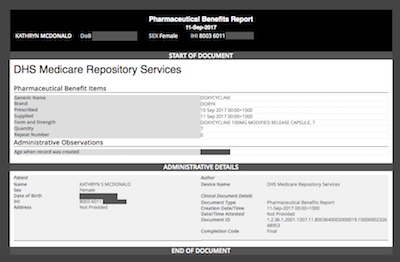
Of all the people in all the world that this should happen to twice, it just happens to be me. My personal My Health Record is showing details of a prescription for a drug that was never prescribed for me for a condition I don't even have – again.
Long-time readers will remember the drama back in May 2013 when I discovered two records in the PBS section of what was then known as my PCEHR, one for a diuretic and one for an antacid, neither of which were mine and for which there was no corresponding MBS record showing a visit to a doctor.

EFTPOS provider Tyro has launched a new service called Tap & Save that promises savings for general and allied health practices and pharmacies on merchant fees for tap-and-go transactions by routing them through the eftpos network.
The Reserve Bank of Australia last year recommended that banks like Tyro provide merchants with what is called least-cost routing functionality, with the eftpos network noticeably cheaper rather than the debit systems used by MasterCard and Visa. About two-thirds of all in-person card payments are now “contactless”, or tap and go.
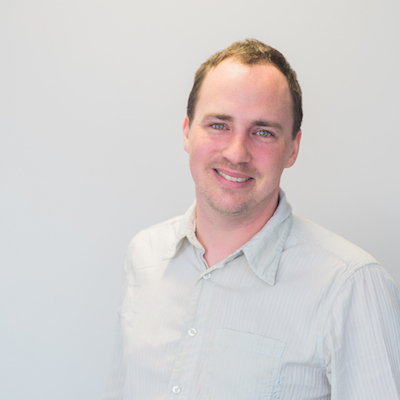
Best Practice Software has added to its growing New Zealand presence with the appointment of Greg Wood to oversee the delivery of its operations at its Hamilton headquarters.
Mr Wood has a software development background and was most recently product design and development leader with Hamilton-based Pacific Technology Solutions.
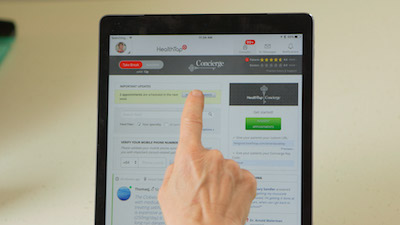
Waikato District Health Board has put an end to its SmartHealth service after a two-year trial, citing a lack of take-up, the technology's failure to reduce attendances at ED and the DHB's precarious financial situation for deciding not to renew the $NZ7.2 million a year contract.
SmartHealth, originally called Virtual DHB, trialled the use of the US-developed HealthTap app to provide free out of hours online consultations with hospital doctors and outpatient consultations with specialists through the app.
Waikato DHB interim chief executive Derek Wright said hospital doctors will still provide telehealth services through the more traditional vehicle of video conferencing between consultants in Waikato Hospital and patients in rural hospitals.
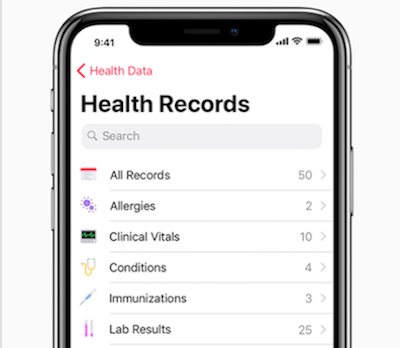
Pulse+IT's weekly round-up of international health IT and eHealth news for the week ending April 8: Apple's EMR feature now live (in the US, for participating hospitals), cash for digital NHS, WebMD redesigns symptom checker, EMR data harnessed for machine learning, electronic scripts go live in NHS urgent care, AI for angiographs
Apple's EHR feature launched last week. Here's what that looks like for patients and providers
MobiHealthNews ~ Laura Lovett ~ 04/04/2018
The feature will aggregate existing patient-generated data in a user’s health app with data from their EHR if the user is a patient at a participating hospital.
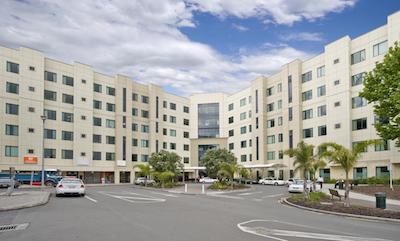
You've got to admire the chutzpah of New Zealand's shadow assistant minister for health Shane Reti in taking new minister for health David Clark to task over his alleged mishandling of the National Oracle Solution program, what with him only having been in the job for less than six months and the project having limped along for close to six years.
Whether it's chuztpah or more front than Myers, Dr Reti is claiming that the project, which promises to streamline financial management, business intelligence and the supply chain for district health boards, including a single catalogue of medicines and medical devices, is alternatively “failing” and “going off the rails”.
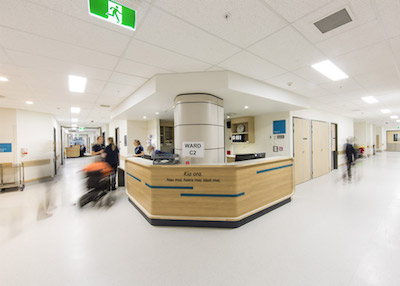
Auckland-based Orion Health will reorganise its business into three main divisions and look to reduce or redeploy resources as its share price hits lows and its hopes of achieving profitability this financial year fade.
Orion, which listed on the Australian and New Zealand stock exchanges in late 2014 after many years as a profitable private company, announced this week that its operating revenue would be slightly lower than its guidance range, at between $170 and $173 million, and it has not crossed into break even territory.

Victoria's Barwon Health is looking for assistance in mapping the business processes across its full range of clinical services as it prepares for the future procurement and implementation of an electronic health record (EHR).
Barwon Health, which takes in University Hospital Geelong as well as a range of sub-acute, community and aged care services, has used a BOSSnet digital medical record for over a decade and has also recently announced it will roll out Cerner's FirstNet system to replace the now unsupported Symphony system in its emergency department.

WA Health is back in the hunt for a medical imaging platform to replace its 2003 era Agfa Quadrat radiology information system (RIS) and Agfa Impax picture archiving and communication system (PACS), issuing a tender for an off the shelf RIS/PACS with vendor neutral archive that appears very similar to one released in 2016, which saw it decline all offers.
Back then the budget for the implementation and maintenance of the system was expected to be about $52 million, but this time WA Health's Health Support Services (HSS) will compare a variety of solutions, including a standalone RIS/PACS without a VNA, a standalone VNA, a combined RIS/PACS/VNA and the specialist components requested.

The federal Department of Health has issued a request for tender for a new system to streamline the management of essential vaccines under the National Immunisation Program, hoping to replace the current labour-intensive, Excel spreadsheet based system with an automated alternative.
It is looking for a commercial off the shelf solution that will connect with the states and territories and the four vaccine suppliers, managing on average 1000 bulk orders a year.

New Zealand's opposition National Party has claimed the National Oracle Solution (NOS) project being managed by NZ Health Partnerships on behalf of the district health boards has “gone off the rails” and is blaming the new health minister for lack of oversight, despite the fact the project was initiated and rolled out under National's watch.
The NOS, a common suite of integrated applications for DHB financial management, supply chain management and business intelligence based on Oracle's ERP software, needs further funding to be completed and is currently being reviewed by Deloitte on behalf of the Ministry of Health.
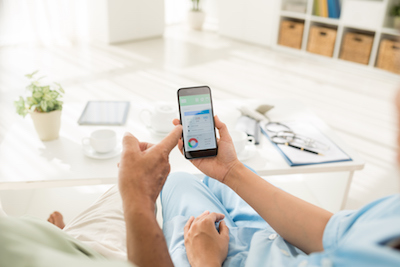
Mobile patient monitoring system vendor Personify Care has partnered with fellow Adelaide firm Chamonix to allow hospitals to integrate the Personify Care platform with their existing clinical systems and the My Health Record and upload data as an event summary.
Called Personify Connect, the module uses the HIPS technology built by Chamonix to enable hospitals to upload discharge summaries to the My Health Record. HIPS has been adopted by a number of state health departments and is also used by the private sector to connect to the national system.

Microsoft has announced the availability of two new Azure regions located in highly secure facilities in Canberra, both of which are aimed at supporting critical government and national infrastructure for Australia and New Zealand.
It has also received a protected certification for its Azure platform and Office 365 from the Australian Signals Directorate (ASD), allowing government agencies to host protected datasets in Microsoft cloud services.
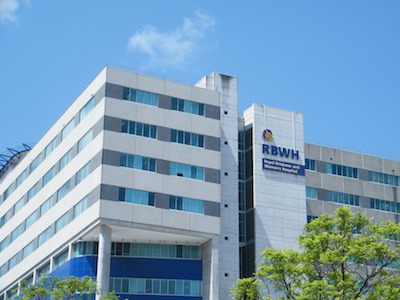
Metro North Hospital and Health Service has issued a challenge under the Advance Queensland Small Business Innovation Research (SBIR) fund for solutions that can help emergency department clinicians make more value-based and evidence-based prescribing decisions.
Funding of up to $500,000 is available under the scheme to develop and test potential solutions, which will be expected to be compatible with existing clinical systems such as Queensland's patient administration system.
There is also the potential to make use of data drawn from the Pyxis MedStations currently being implemented at Metro North, which includes Royal Brisbane and Women's Hospital, Queensland's largest. The Pyxis systems can can collect accurate and precise data on volumes and types of medications used in the ED and provide real-time stock usage reports.


Pathology and its place in the public domain was the big topic of discussion this week as things started to heat up in the My Health Record stakes. On Monday we reported that we reported that Canberra Hospital was set to begin uploading pathology and diagnostic imaging reports to the system in May, joining NSW and the NT in contributing data from the public sector.
ACT is doing it slightly differently from the others in that it's using the capabilities of Orion Health's Rhapsody integration engine rather than the HIPS middleware developed a few years back by Adelaide firm Chamonix or the HealtheNet system that NSW uses for a number of clinical purposes.

The GoShare digital patient education platform from Healthily is now available for free to GPs, primary care nurses and allied health professionals working within general practice in western Victoria.
GoShare allows information to be customised based on the patient’s needs and health literacy and can be send in formats such as video, animation, text or apps by email or SMS.

The automatic creation of a new user Windows account when the Argus secure messaging system is installed by medical practices is the likely culprit for a small number of hacks that occurred in January.
Former customers who might still have legacy versions of Argus sitting inactive on a practice computer or their server have been encouraged to uninstall the application and delete any accounts associated with it.

The Department of Health has offered an enforceable undertaking that it will do better in complying with privacy principles in response to an investigation that found it had inadvertently breached the Privacy Act when it released a sample of data for research purposes in 2016.
University of Melbourne researchers discovered that the identities of doctors could be decrypted from the data set, which involved MBS and PBS billing records. The dataset was removed from the internet but the same researchers also later discovered that patients could potentially be identified too.

The Queensland Pap Smear Register has had to recommence sending reminders to women who are overdue for a cervical screen or who have had abnormal or unsatisfactory results following the delay in rolling out a fully operational National Cancer Screening Register (NCSR).
While the NCSR is now receiving results from the new HPV test and is handling follow-up reminders for urgent results, the state and territory registers are still operating in order to issue correspondence to women who had their last cervical screening test more than two years ago.

South Australia has gone live with clinical information and localised referral resource HealthPathways, with the system available for free to GPs and other health professionals throughout the state.
First developed by NZ's Canterbury District Health Board, the HealthPathways model is now in use across Australia. HealthPathways SA has been developed through a partnership between SA Health, Adelaide PHN and Country SA PHN.
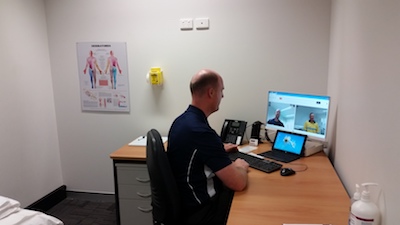
WA-based physiotherapy network Biosymm has been able to reduce workers' compensation claim numbers through earlier intervention using the WebRTC-based technology developed by CSIRO's Data61 spin-out Coviu.
Coviu, which officially launched in 2016 and includes exercise physiology group HTA, child health and education charity Royal Far West and hospital group Ramsay Health Care as customers, has added new features to the platform including online appointment booking, a patient portal, online payments, patient waiting rooms and integrations with practice management software.

NZ pharmacy and medical centre provider Green Cross Health has appointed former Fonterra staffer Mark Smith as its new chief information officer, with a remit to lead digital transformation across the group.
Mr Smith oversaw Fonterra's digital team, rolling out advanced analytics, internet of things and artificial intelligence capabilities.

Only about three in every thousand pathology orders are being checked 'do not send' to the My Health Record in a proof of concept trial currently taking place in northern Queensland, a ratio that is expected to continue when the system goes opt-out later this year.
The Australian Digital Health Agency's (ADHA) pathology and diagnostic imaging program director Paul Carroll told an industry webinar today that the agency expects to have about 80 per cent of pathology reports automatically uploaded to the expanded system by the end of the year.
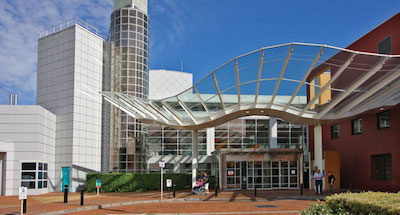
The Sydney Children's Hospital Network (SCHN) has gone live with full EMR integration of its new Connect app, allowing messages sent by patients to be directly accessible by the clinical team within Cerner's PowerChart module and patients to receive instructions and information on their personal device.
In what is thought to be the first direct patient content to be integrated into an EMR in Australia – and perhaps even worldwide – SCHN worked with Irish patient infotainment vendor Oneview to co-design the app, which is now live in all departments at the Children's Hospital at Westmead.
Oneview Connect was first piloted last year with some patient groups to test functionality such as SMS communication between patients and clinicians, appointments rescheduling and notifications of events. The full version integrated with the EMR has now been launched throughout the hospital, with plans to also roll it out at Sydney Children's Hospital at Randwick in about a year.

Brisbane-headquartered surgical pathology provider InfinityPATH has become one of the first private labs to begin uploading pathology reports to the My Health Record.
The independent company, which has a specialist interest in dermatopathology, is one of a number of private sector providers that signed up to connect to the system last year. Others include market leaders Sonic Healthcare, Australian Clinical Labs (Healthscope) and Primary Health Care.
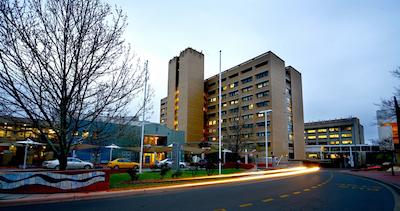
ACT Health will begin uploading pathology reports to the My Health Record in early May, with diagnostic imaging reports to follow later that month.
Unlike other jurisdictions that are using a broker such as the HIPS middleware or the HealtheNet system used by NSW Health, ACT Health will instead upload the reports directly through its Rhapsody integration engine from Orion Health.

HealthLink co-founder and former CEO Tom Bowden has moved back into the top job at the secure messaging vendor, having stepped aside in May last year.
Mr Bowden had been acting in an executive director role maintaining the company's industry relationships since then, including taking a leading role in the secure messaging interoperability trials being overseen by the Australian Digital Health Agency.

Pulse+IT's weekly round-up of international health IT and eHealth news for the week ending March 25:
Price tag for new VA EHR now totals nearly $16B
Health Data Management ~ Greg Slabodkin ~ 22/03/2018
The Cerner electronic health record system that the Department of Veterans Affairs plans to implement over 10 years will cost a total of $15.8 billion, according to the latest VA data provided to Congress.
DHS: some GE imaging devices are vulnerable
Healthcare Info Security ~ Marianne Kolbasuk McGee ~ 19/03/2018
A recent alert from the Department of Homeland Security warning of vulnerabilities in certain medical imaging product lines from GE Healthcare also serves as a reminder to other medical device makers and healthcare entities about the risks posed by hardcoded and default credentials.

It probably comes as no surprise that our two most popular stories this week both concern nefarious goings on in the darker recesses of our networked world, but apart from them both involving thankfully unsuccessful attempts by hackers to gain unauthorised access to our healthcare systems, what they both have in common is an unfortunate lack of transparency about what really went on.
On Wednesday, we revealed that Western Health, which runs the Sunshine, Footscray and Williamstown hospitals in Melbourne's west, had been subject to an attack from the WannaCry ransomware cryptoworm that caused such havoc for the NHS last year and disrupted the basic operation of about a third of the UK's hospitals for days.

Telstra Health is recommending that practices check their remote desktop connection and install an up to date version of the Argus secure messaging service following reports that a small number of computers were infected by malware back in January.
Fairfax Media reported today that it appears a problem with password configurations for remote desktop access caused the connections to stay open, allowing hackers to load malware.
A Telstra Health spokesman told Pulse+IT that the company became aware of the issue in January, and since issuing a patch, no additional incidents have been reported.

Tasmania's Health Minister Michael Ferguson has retained his portfolio in the newly re-elected Hodgman Liberal government following the March 3 election, while former shadow spokesman for health in South Australia Stephen Wade has been named as the new Marshall Liberal government's Minister for Health and Wellbeing.
Mr Ferguson, who was sworn in yesterday, faces a serious problem with ambulance ramping at Royal Hobart Hospital and the withdrawal of accreditation from emergency medicine training at Launceston General Hospital.

Sydney-headquartered patient experience and analytics firm Energesse is rolling out its MES Experience real-time patient feedback program to hospitals in the South Western Sydney Local Health District following positive results from its first implementation at Western Sydney LHD.
Patient experience platforms are increasingly being used worldwide to provide real-time data to frontline staff and healthcare managers. Energesse has customised its platform for the Australian setting based on the Membership Engagement Services (MES) system used by the UK's National Health Service and implemented it at Westmead, Blacktown, Mt Druitt and Auburn hospitals starting from January 2017.

Melbourne's Western Health has confirmed it was a target of the WannaCry ransomware worm earlier this year, although it appears not to have been successful.
Western Health runs the 600-bed Sunshine Hospital in St Albans as well as the 290-bed Footscray Hospital and the smaller Williamstown Hospital, and will manage the new $200 million Joan Kirner Women’s and Children’s Hospital when it opens at the end of the year.

The executive director of information and performance and CIO of Melbourne's Western Health, Russel Withers, has resigned.
Mr Withers, who was in the role for almost two years, was previously ICT director for the Serco facilities management contract for Perth's Fiona Stanley Hospital.

Clinical and practice management software vendor MedicalDirector has partnered with Melbourne-based online booking and reception management vendor AutoMed Systems to offer an integrated system for users of MD's Clinical and Pracsoft products and its new Helix cloud-based software.
AutoMed, which is also integrated into Best Practice, offers 135 different functionalities to help streamline workflows including online appointment bookings, caller ID and self-serve check-in kiosks with Medicare card readers, as well as auto billing.

Northland District Health Board in New Zealand will become the first site outside of the US to implement Philips' Illumeo platform, which promises to enhance how radiologists work with medical images.
Dubbed an “adaptive” intelligence platform, Illumeo is able to gather information from sources such as electronic medical records to provide a holistic view of the patient. It also provides extra diagnostic tools that adapt to the doctor's needs.

ASX-listed New Zealand company Volpara Health Technologies has been chosen to provide its VolparaDensity software to a research project being run by the NHS's breast screening program (NHSBSP) in England.
The project is the second stage of the Predicting Risk of Cancer at Screening (PROCAS) study, which aims to improve breast cancer risk prediction for women attending routine breast screening.

Mobile workflow solutions specialist Ascom has added DECT phone capability to its Myco 2 smartphone platform, promising interference-free communications that can be enabled with a firmware update to the Myco device.
The company is also developing a new Myco 3 smartphone, which promises a new design, an updated operating system and a enhanced user experience through a larger, high definition screen format.
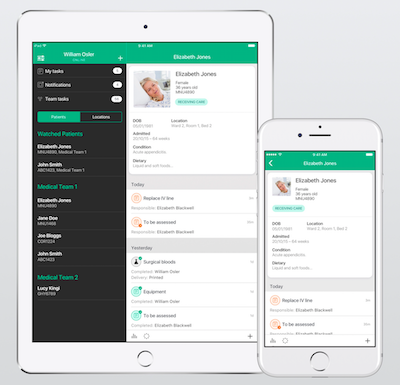
A digital patient list and task manager, a clinical documentation system, electronic ordering and viewing of results, and a care coordination and communications channel that links all team members in a patient's care, delivered on mobile devices that clinicians actually like to use: this is the promise of Cortex, which is set to be rolled out widely at Christchurch Hospital’s new acute services building when it opens at the end of the year.
Developed by Christchurch firm Sense Medical in association with the Canterbury District Health Board, a 12-week trial of the system in three general surgical wards last year saw a massive 20 per cent drop in average length of stay and a similar reduction in readmissions to hospital, which its developers say is due to a series of 'micro-wins', including time and workflow efficiencies that add up to earlier discharge and more effective care coordination.

Telstra Health has released a preview of the next version of Communicare in anticipation of its soon to be announced public release.
The company has reverted to numbering its releases by the year, so while the current version is 15.1, the new one will be v18.1.

Victorian GPs can now send referrals to Northern Health and Plenty Valley Community Health outpatient clinics electronically through MedicalDirector and Best Practice.
Part of the Victorian eReferrals program, which also allows GPs to connect to Austin Health and Eastern Health, the system is using HealthLink's SmartForms solution, which is integrated into the practice management systems and can pre-populate referral forms with patient data.
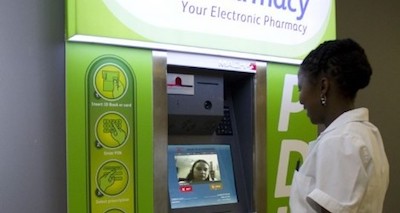
Pulse+IT's weekly round-up of international health IT and eHealth news for the week ending March 18:
ATM pharmacy officially launched in Joburg
eHealth News South Africa ~ Terri Chowles ~ 15/03/2018
The PDU facilitates Skype-like audio-visual interaction between patient and tele-pharmacists, and has cloud based electronic software and robotic technology to dispense and label medication.
NHS providers given financial incentive to move to e-referrals
Digital Health News ~ Owen Hughes ~ 15/03/2018
Provider trusts will now only receive payment for outpatient appointments for which the referral was made electronically, in a change intended to encourage use of the NHS e-Referral Service (e-RS).
HSE’s interim CIO gives updates on Ireland’s digital healthcare journey
Digital Health News ~ Hannah Crouch ~ 12/03/2018
The interim CIO for Ireland’s Health Service Executive (HSE) has said one of her biggest challenges will be implementing the ideas of her predecessor.

In 2017, technology research firm Gartner ranked virtual assistants and machine learning at the “peak of inflated expectations” on its much-quoted emerging technologies hype cycle, but it also named AI as one of three big megatrends that will provide unrivalled intelligence and create profoundly new experiences in the next five to 10 years.
We were pondering this projection this week having read up on a stunning yarn that has utterly transfixed the health IT and the wider IT industry in New Zealand. In two seriously good stories in Kiwi independent site The Spinoff – here's the first, and here's the follow-up – Auckland journalist David Farrier took a look at a purported artificial intelligence technology called Zach, the creation of a supposed charity called The Terrible Foundation and its founder Albi Whale, which was set to revolutionise healthcare as we know it.

The Australian Digital Health Agency (ADHA) recently announced it was funding a number of children's digital health initiatives, including a national child health record, adding school immunisation records to the national register, developing a pregnancy digital health record and digitising child health check data so it can be shared electronically.
Led by eHealth NSW and the Sydney Children's Hospitals Network (SCHN) under the auspices of the National Children’s Digital Health Collaborative, the idea is to kick off the four pilot projects in the next couple of years, which will then help inform the fifth initiative: a longitudinal digital child health record that could have far-reaching implications for the future health and wellbeing of Australian children as they grow into adulthood.

The Australasian College of Health Informatics (ACHI) has accepted 14 candidates into its fellowship by training program, a four-year course that includes a year of paid work placements leading to a PhD qualification in health informatics.
Thirteen are from Australia and one from NZ, with one candidate already offered a placement at the Australian Digital Health Agency (ADHA).

Auckland-based Orion Health will build a regional portal and shared care record providing an integrated digital view of patient data across four national health boards in the north of Scotland, joining the five boards in the west of Scotland that also use an Orion regional portal.
It will also provide access to the Orion clinical portal used by the Greater Glasgow and Clyde board, where many patients also receive care, and will link up to the two practice management systems used by GPs in the region and Scotland's emergency care summary data.

Radiology information systems specialist Comrad Medical Systems has become a reseller for Nuance Communications' Dragon Medical Direct cloud-based speech recognition system in New Zealand.
Comrad also offers Nuance's PowerScribe 360 speech recognition radiology reporting solution integrated with its RIS.

Data solutions firm Pen CS and health informatics specialist Ocean Health Systems have joined forces to offer a comprehensive package for shared care planning to general practices and primary health networks, involving Pen's Topbar tool and Ocean's LinkedEHR.
Pen announced this week it had become a major shareholder in Ocean. Pen CS director Tom Wenkart said the two companies had been discussing working together before Ocean's financial difficulties forced it into voluntary administration.

Researchers at Queensland's QIMR Berghofer Medical Research Institute have developed an online test aimed at people aged over 40 to predict their risk of developing melanoma over the next 3.5 years.
The team behind it now plans to trial the online melanoma risk predictor among skin cancer doctors and their patients to test how it performs in the clinic.

Medical and practice indemnity insurer MDA National has launched a cyber risk program with complimentary cover to its medical practice policyholders, citing cyber risk as a serious issue for medical practices that is further increased by the adoption of electronic health records and billing systems.
The company's program for 2018/19 comprises a suite of education and resources to support medical practices in light of the federal government’s new mandatory privacy breach obligations which took effect last month.

Whanganui District Health Board is working on a pilot to provide a safer way to view orthopaedic referrals which it hopes will help avoid a repeat of the tragic death of an 80-year-old woman, in part due to the poor triage of referrals including a handwritten one from a GP.
Whanganui DHB has also rolled out new clinical information systems such as Orion Health's Clinical Portal and DXC's webPAS, replacing the aged OraCare PAS, which is says will significantly enhance referral management and visibility.
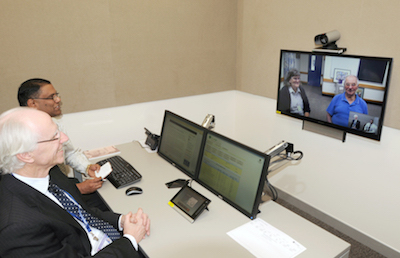
The University of Queensland’s Centre for Online Health (COH) is set to go live with a new telehealth service providing specialist geriatric care and dementia care to Aboriginal and Torres Strait Islander people living in rural and remote Queensland.
Funded by the federal Department of Health, the project will provide dementia services including screening, treatment, patient support and health promotion by telehealth to six community-controlled Aboriginal Medical Services, delivered by medical specialists from two hub sites at Brisbane's Princess Alexandra Hospital and Cairns Hospital.

Former MYOB general manager James Scollay will be the acting CEO of medical specialist software vendor Genie Solutions for the next six months as the company focuses on growth, external investments and the industry's transition to the cloud.
Mr Scollay is acting in the role following the resignation last month of Emma Macek, who took over from founding CEO Paul Carr when he retired in late 2015.

Victoria's Barwon Health has issued a tender for a remote patient monitoring service, requesting a software and hardware solution for a minimum of 100 users with a range of conditions including diabetes, chronic heart failure, COPD, palliative care, mental health and home dialysis.
It must be able to receive data from biometric monitoring devices such as blood glucose meters, blood pressure machines, scales, dialysis machines, spirometers and activity-tracking and sleep-tracking devices. It must also allow healthcare professionals to video conference with patients and for SMS messaging and reminder capabilities.

Data solutions firm Pen CS has become a major shareholder in Ocean Health Systems, allowing it to emerge from the voluntary administration it entered into in January.
Ocean's managing director Sam Heard and non-executive director David Rowed remain with the company, but chief clinical information officer Heather Leslie has left. Former CEO and chief medical officer Hugh Leslie stepped down in September last year.

Pulse+IT's weekly round-up of international health IT and eHealth news for the week ending March 11:
Google announces Cloud Healthcare API to unlock health data
Health Data Management ~ Greg Slabodkin ~ 06/03/2018
Google’s Cloud Healthcare API is meant to extract data from electronic health records and “other proprietary data” by using DICOM, FHIR, and HL7 protocols, according to Eric Schmidt, technical advisor and former executive chairman of Alphabet, the parent company of Google.
Seema Verma rolls out new CMS interoperability initiatives
Healthcare IT News ~ Susan Morse ~ 06/03/2018
The initiative will ensure that patients receive a copy of their entire health record electronically. It will be done through program interfaces, or APIs, she said

We decided to take a bit of a squizz at the goings on over at the Australian Digital Health Agency (ADHA) this week amid a flurry of activity that seems to be emanating these days from Pitt St. We'd been thinking they had a pretty quiet start to the year and were ready to go nosying about, but it turns out that they'd all been busy little bees, what with organising the recent international gabfest and putting the final touches on an absolutely ginormous program of work for the coming years.
We described it in our story this week as putting some meat on the bones of the seven priorities outlined in the National Digital Health Strategy, but if you take a look at what the draft Framework for Action actually entails, it's a hefty enough slab that will keep ADHA's 250 or so staff eating barbecue for the next four years.

The New Zealand government will make a decision on the future of the $65 million National Oracle Solution (NOS) at the end of next month after it emerged cabinet approval would be required for the additional funding needed to complete the project.
The NOS was to have begun its roll out to district health boards early last year but was delayed due to problems encountered with the National Infrastructure Program (NIP), which originally was to have seen all 20 DHBs move to an IBM-provided Infrastructure-as-a-Service platform.

The Australian Digital Health Agency (ADHA) has released a draft Framework for Action that it plans to use to implement the National Digital Health Strategy, with a consultation phase running for the next month looking for input from the industry on its merits.
The framework puts meat on the bones of the overarching national digital health strategy and proposes the development of national blueprints for secure messaging, interoperability, health technology, health apps and medicines; a role in real-time prescription monitoring, end of life care and residential aged care; and a goal of making the My Health Record “an unprecedented platform for innovation”.

The towns of York and Goomalling in the West Australian wheatbelt have been equipped with telehealth consulting rooms, DXC's webPAS patient administration system and electronic referral capability as part of the WA Country Health Service's $300 million capital works program.
York and Goomalling are two of 37 towns in country WA that are receiving improved infrastructure, including digital technology. The project also involves upgrades to 23 small hospitals and health centres across the region.

Online appointments and directory service HealthEngine has appointed Edward Bray as its new chief marketing officer.
Mr Bray was most recently based in Singapore, where he headed up LinkedIn's Asia-Pacific marketing office. He also spent nine years at Fairfax Media.
Copyright © 2025 Pulse IT Communications Pty Ltd. No content published on this website can be reproduced by any person for any reason without the prior written permission of the publisher. If your organisation is featured in a Pulse+IT article you can purchase the permission to reproduce the article here.
Website Design by Get Leads AU.